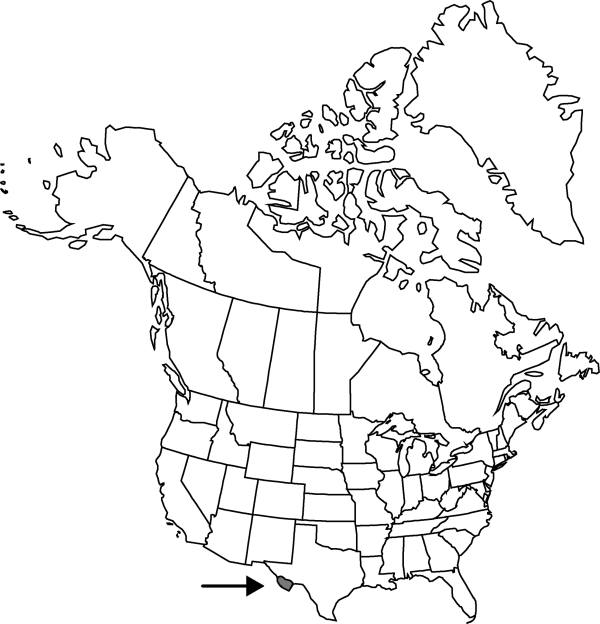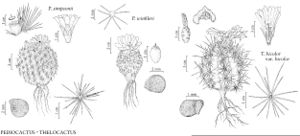Thelocactus bicolor var. bicolor
Plants few branched or unbranched, usually not deep-seated in substrate. Stems usually ovoid to cylindric at maturity, 7.5–18 (–38) × 5–10 (–13) cm, surface very poorly concealed to 1/2 hidden by spines; ribs 8–13, tubercles confluent into rounded ribs 15–25 mm wide; areoles spaced 8–20 mm apart along ribs. Spines red-and-white (older spines weather to ashy white); radial spines 9–18 per areole, longest spines 12–30 mm; adaxial (bladelike) spines 16–75 (–100) × 1.5 mm; central spines (1–) 4, longest spines terete to sharply angular, then abaxially keeled and adaxially flat to grooved, (13–) 20–45 (–60) × 0.4–1.5 mm, adaxial 3 like radials but larger. 2n = 22.
Habitat: Chihuahuan desert scrub, Tamaulipan thorn scrub, sedimentary, igneous, and alluvial substrates
Elevation: 0-1200[-2000] m
Distribution

Tex., Mexico (Chihuahua, Coahuila, Durango, Nuevo León, San Luis Potosí, Tamaulipas, Zacatecas).
Discussion
Thelocactus bicolor var. bicolor, in the strict sense, may be limited to Mexico; if so, then var. tricolor and/or var. schottii might deserve formal recognition.
Selected References
None.
